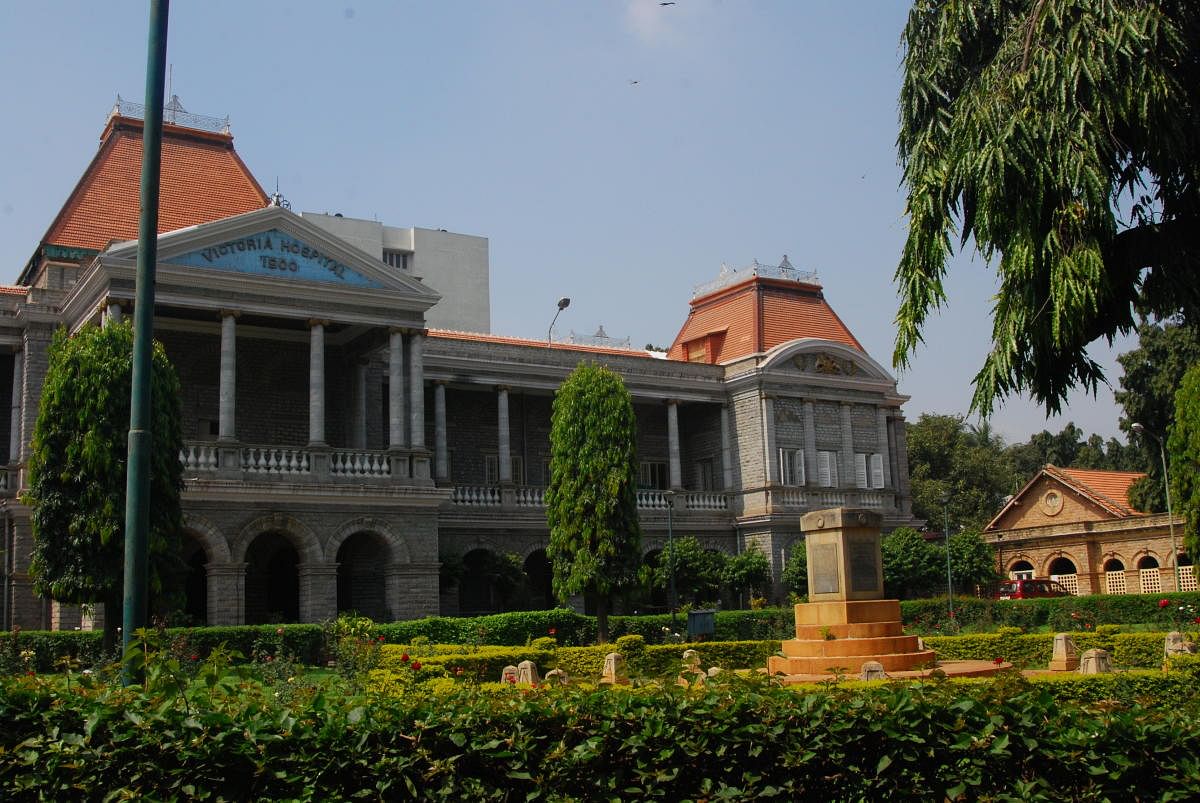
One of Bengaluru’s heritage buildings that has been in the news recently is Victoria Hospital. This building’s story began on June 22, 1897, when as part of the diamond jubilee celebrations of Queen Victoria’s reign, the then Maharani Regent of the Mysore kingdom, Kempananjammani avaru, laid the foundation stone for the hospital.
She wished to have a hospital that could provide medical attention “to sufferers of all classes without distinction.”
Bengaluru had access to Western medicine since at least 1833, when a dispensary for modern medicine first opened in the pete area.
Bowring Hospital in the Cantonment was built in 1868 and St Martha’s came up in 1886. But as the city grew, so did its medical needs, and who knew this better than the State’s Senior Surgeon, Lt Col Terence Joseph McGann (Shivamogga’s McGann Hospital is named after him).
McGann urged the administration to establish a new hospital and also chose a site for it that was close to the city’s population centre.
The hospital was formally opened on December 8, 1900 by the then Viceroy and Governor General of India, Lord Curzon. In his speech, Curzon spoke about how the hospital would keep alive the name of not only Victoria, but also the Maharani.
When it opened, Victoria Hospital was among the largest and best-equipped hospitals in the region.
It could accommodate 100 patients (today, it can accommodate 1,000) and had departments for treating ear, nose and throat diseases, dental ailments, and for X-ray diagnosis.
People from around Mysuru and also from neighbouring states came here for medical care. This being the early 1900s, there were separate wards for Europeans and Indians, with the latter being further subdivided along caste lines. A few wards were set aside for patients who paid for their care.
Besides McGann, many other people helped establish and consolidate Victoria Hospital’s early reputation as a prestigious institution, the pride of the state of Mysore. Col John Smyth was Senior Surgeon from 1904 and also in charge of Victoria Hospital. His associate TV Arumugam Mudaliar was for many years the hospital’s Resident Medical Officer. Mudaliar, who has a street and circle named after him in Bengaluru, was described by Sir Mirza Ismail as “a devoted and self-sacrificing worker and an able surgeon.”
Another name that shines bright in Victoria Hospital’s history is that of Dr T Seshachalam, a professor of anatomy and a surgeon at the hospital.
Dr Seshachalam was a scholar of repute with several academic articles to his credit. In 1930, he along with another doctor published a paper in the Indian Medical Gazette titled, The Arterial Supply of the Appendix. Here, he described a hitherto unknown mode of blood supply to the appendix via an accessory appendicular artery, which is now sometimes also known after him as the artery of Seshachalam.
Several philanthropes have added to the hospital’s facilities over the years. In June 1916, a few days after Nalvadi Krishnaraja Wodeyar’s birthday, K P Puttanna Chetty wrote that the King’s birthday seemed a good time to make a contribution of Rs 25,000 towards the construction of an out-patient ward for Victoria Hospital. These wards, opened in 1924, were named after Puttanna Chetty in recognition of his generous donation.
During its golden jubilee, Raja Venkataramana Setty and Gokaldas Harbhagwandas also donated money for additional blocks. More recently, Infosys Foundation helped set up a central laboratory.
The hospital’s design was based on late-19th century European ideas of health. Health providers believed ample air circulation and lighting were paramount in bringing down mortality rates. Accordingly, like most 19th century European hospitals, Victoria Hospital was built on a pavilion plan: patient wards were built on separate pavilions connected by colonnades. To ensure adequate ventilation, the wards had high ceilings and large windows.
Considerable thought was also given to aesthetics. The striking, steeply sloping, four-sided mansard roofs topped with iron railings were popular features of Victorian architecture. An arched porch emphasises the entrance. The ionic pillars on the first floor stand in contrast to the ground floor’s semi-circular arched colonnades. The garden was an inherent part of the hospital’s design. Early additions to the premises were made only after administrators were convinced that the view of the building would be unimpaired!
Interestingly, the site where the hospital stands was earlier a part of the moat that surrounded the Bengaluru Fort. The stone used in its construction was from dismantled portions of the Fort.